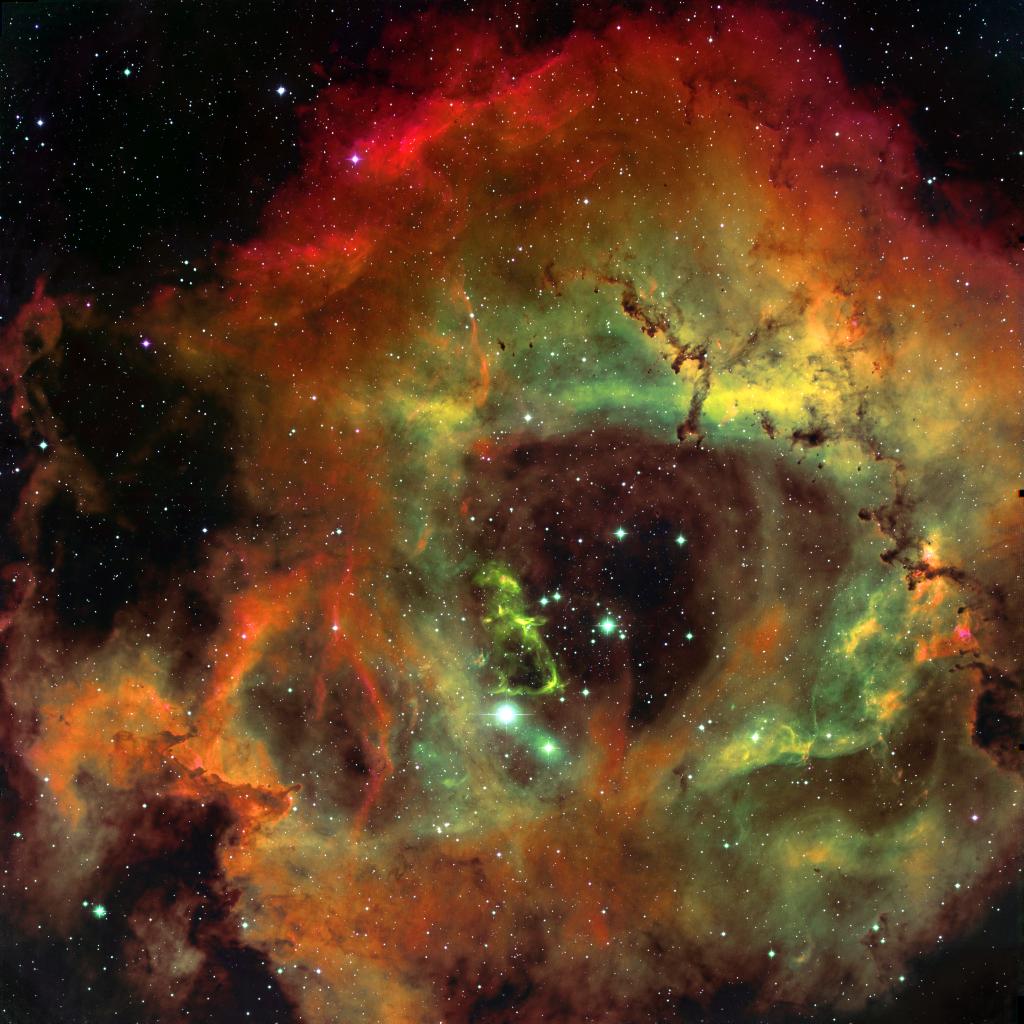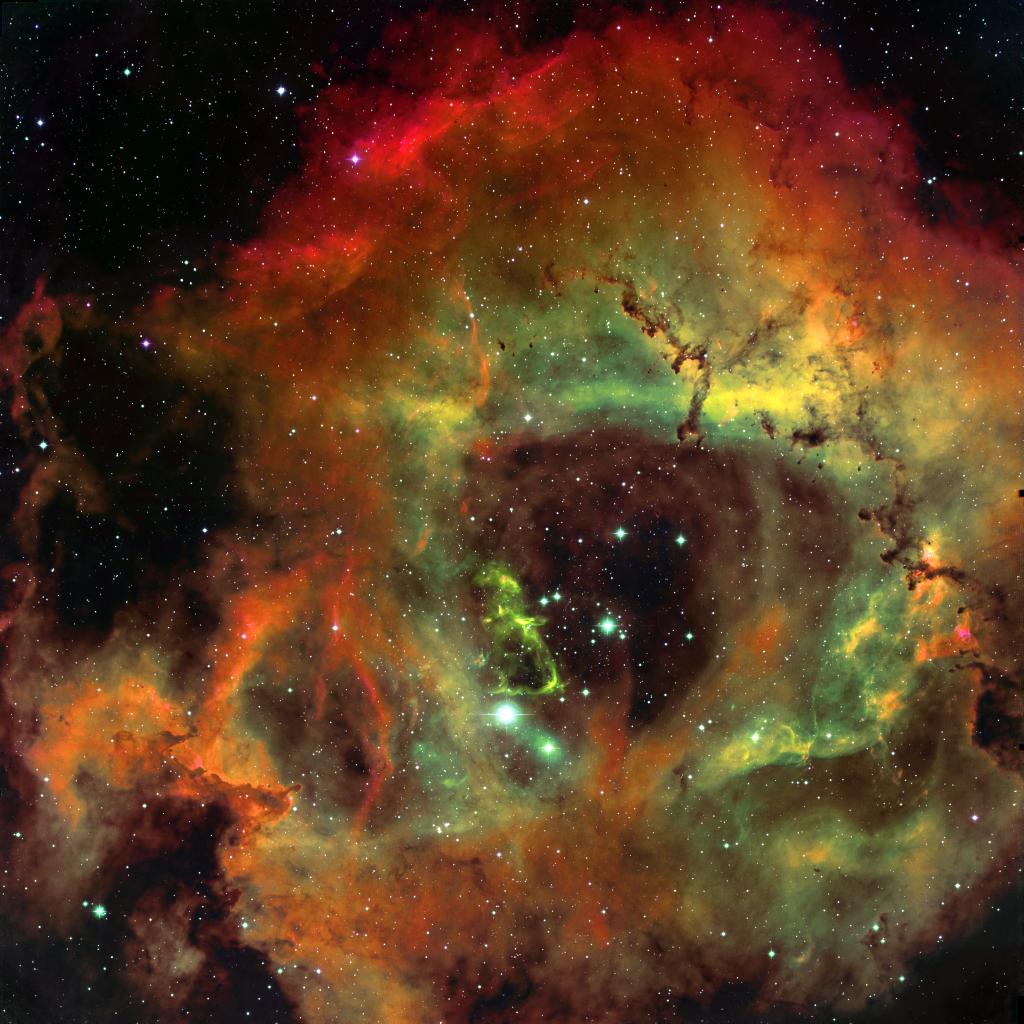

This is the Rosette Nebula (more formally known as Caldwell 49, or NGC 2237): an H II region found in the constellation of Monoceros. Additionally, it lurks on the outer edge of a giant molecular cloud in that region of space, about 5,000 light-years from Earth.
The nebula itself composed of several parts. One of its designations, NGC 2237, is generally used to describe the nebula as a whole, though NGC 2237, 2238, 2239, and 2246 also denote specific, noteworthy regions within the confines of the nebula itself. NGC 2244, specifically, is the open star cluster located in the center of the nebula, which was forged out of the nebula’s material.
Rosette is largely composed of hydrogen gas. This is why it appears red in most of the photographs that we take. In this particular picture, it’s false colored to outline hydrogen (red), oxygen (green), and sulfur (blue). In addition to the cluster already situated in Rosette’s center, the dark filaments running through the top of the nebula are cocoons of gas that are nursing new stars to life.

You can see more pictures of the Rosette nebula below: